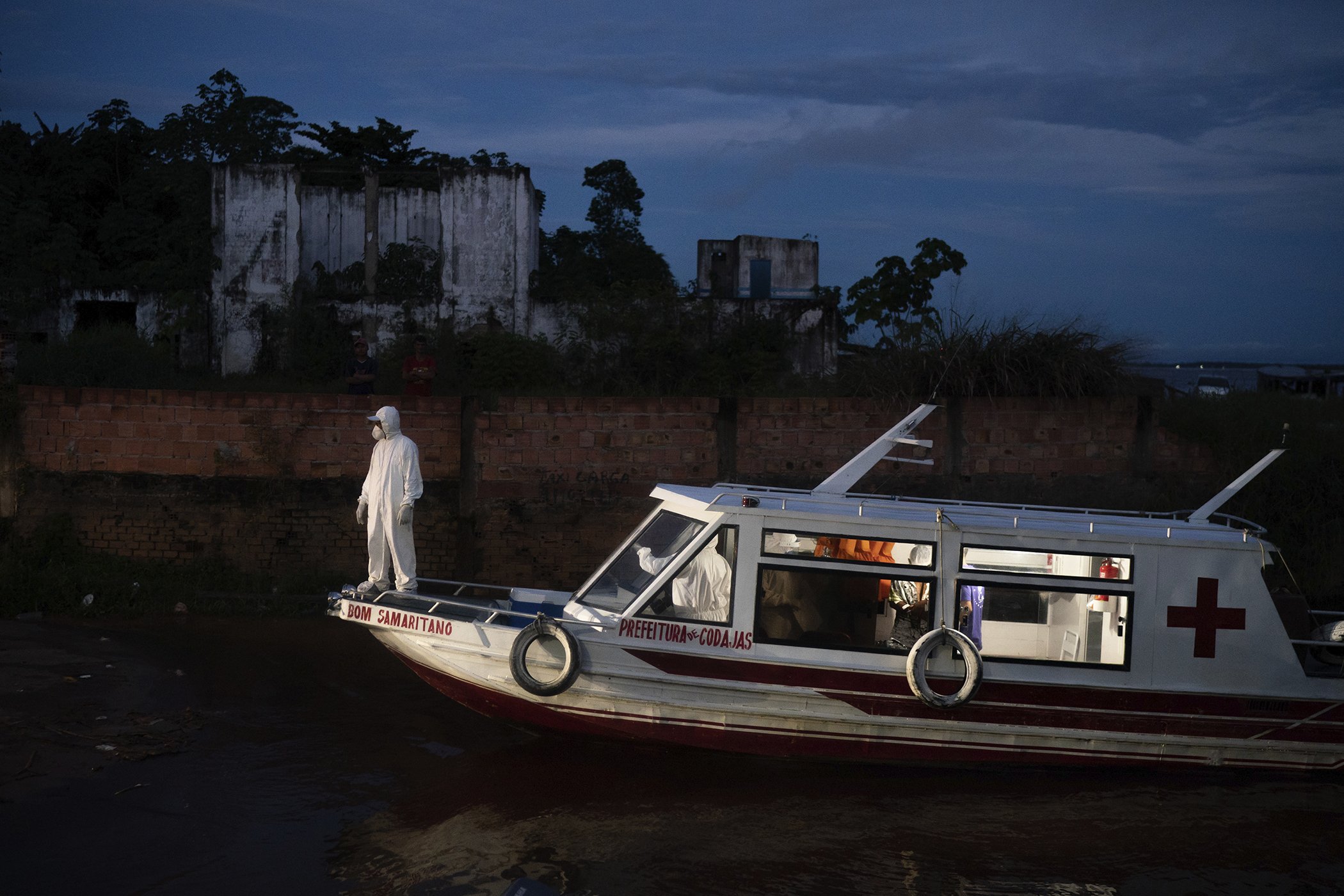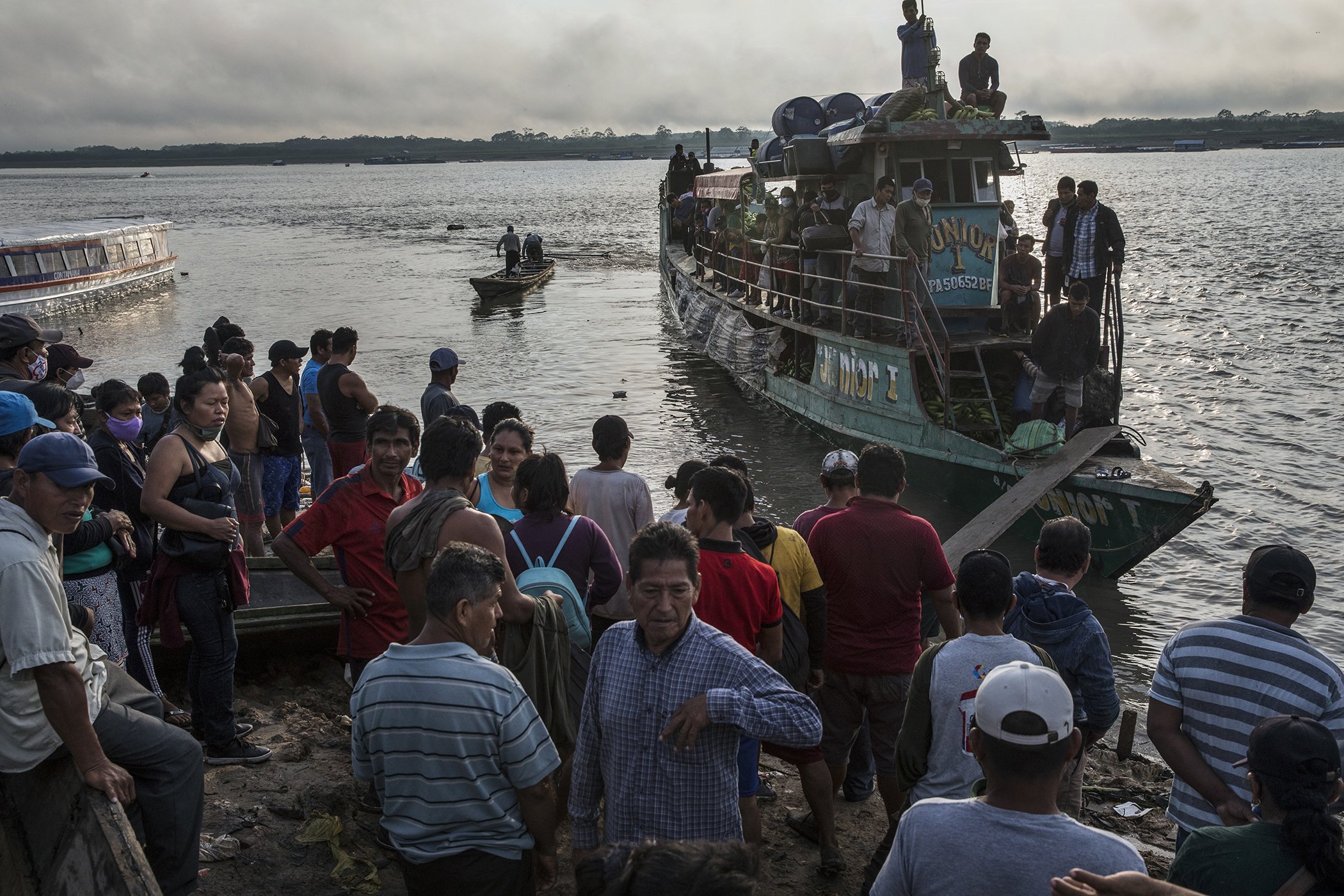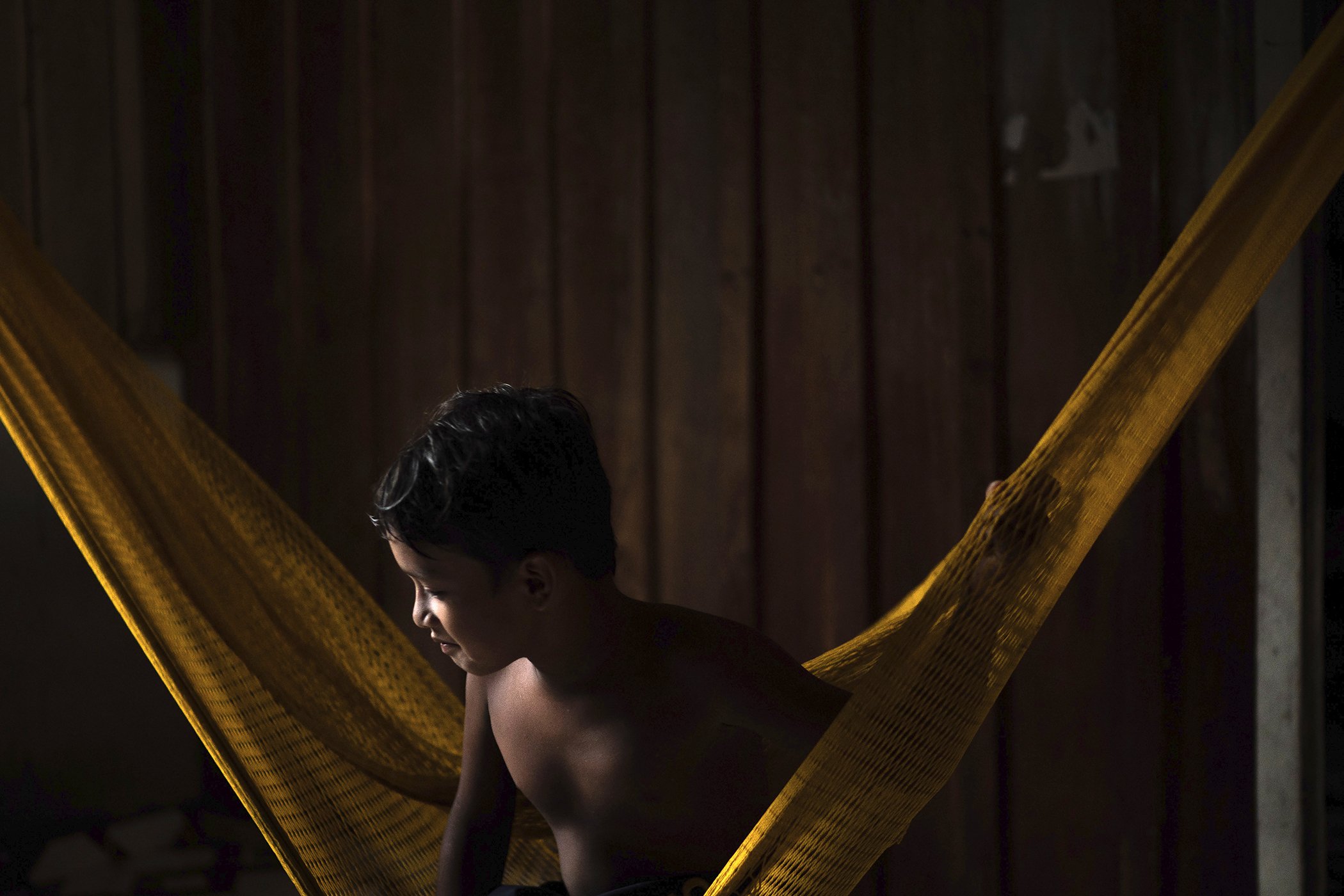The COVID-19 pandemic has followed a familiar pattern for Indigenous communities throughout the Amazon rainforest.
After years of their lands being destroyed by forest fires, industrial projects, and urban expansion, a deadly virus arrived and took advantage of their simultaneously remote and exposed position.
They're remote in the sense of being hours away from well-resourced medical facilities and exposed in the sense that outsiders were constantly passing through their homeland to exploit natural resources, while polluting their sources of food and water in ways that weakened their immune systems.
The United Nations warned governments about this dynamic back in March, and its predictions ultimately came true.
By the beginning of September, the death rate from COVID-19 among Indigenous people in Brazil was 250% higher than the general population, according to the Thomson Reuters Foundation.
Since then, the Brazilian government has dispatched military doctors to provide emergency medical care to the Guajajara tribe in Maranhão state at the end of September. International organizations such as the Pan American Health Organization (PAHO) and the World Health Organization (WHO) are also spearheading relief efforts — but they need more funds.
 A health worker in protective equipment stands on a boat carrying COVID-19 patient Jose da Conceição as he waits for an ambulance to transfer him to a hospital after arriving in the port of Manacapuru, Amazonas state, Brazil, June 1, 2020.
A health worker in protective equipment stands on a boat carrying COVID-19 patient Jose da Conceição as he waits for an ambulance to transfer him to a hospital after arriving in the port of Manacapuru, Amazonas state, Brazil, June 1, 2020.
A health worker in protective equipment stands on a boat carrying COVID-19 patient Jose da Conceição as he waits for an ambulance to transfer him to a hospital after arriving in the port of Manacapuru, Amazonas state, Brazil, June 1, 2020.
Global Citizen is joining PAHO to call for investments in the Amazon’s Indigenous communities to ensure that the pandemic can be contained and that similar outbreaks don’t happen in the future.
Global Citizen recently communicated via email with Jessica Tome, an analyst for the science panel for the Amazon at the Sustainable Development Solutions Network, about the COVID-19 pandemic in the Amazon rainforest, how Indigenous communities have been affected, and what can be done to help.
Global Citizen: What makes Indigenous communities throughout the Amazon uniquely vulnerable to the COVID-19 pandemic? How does the pandemic expose long-standing inequalities?
Jessica Tome: In the Latin American and Caribbean region, Indigenous and Afro-descendant communities have historically faced inequalities. Their lower incomes, lower level of educational attainment, and other disadvantaged social determinants of health, compounded with their reduced access to health services, geographic barriers, discrimination, and stigma, make these populations particularly vulnerable to COVID-19 infection and mortality during this COVID-19 pandemic.
 People arrive in a public taxi boat to the Shipibo Indigenous community of Pucallpa, located along the Ucayali River in the Amazonian rainforest of eastern Peru, Sept. 3, 2020. Transportation is one of the biggest hurdles in treating indigenous groups.
People arrive in a public taxi boat to the Shipibo Indigenous community of Pucallpa, located along the Ucayali River in the Amazonian rainforest of eastern Peru, Sept. 3, 2020. Transportation is one of the biggest hurdles in treating indigenous groups.
People arrive in a public taxi boat to the Shipibo Indigenous community of Pucallpa, located along the Ucayali River in the Amazonian rainforest of eastern Peru, Sept. 3, 2020. Transportation is one of the biggest hurdles in treating indigenous groups, some of which can only be reached by helicopter or an eight-hour boat ride.
The COVID-19 pandemic poses an increased risk to the health of Indigenous peoples, both those living in urban areas and those living in remote settlements or isolated areas, where access to health services is a challenge and there is often a limited capacity to serve the entire population. Among Indigenous populations, either living in remote settlements or isolated in urban areas, some of the risk factors that may be associated with higher COVID-19 mortality rates include malnutrition, insufficient access or complete lack of access to health systems as well as to potable water and basic sanitation, in addition to the existing high burden of parasitic diseases. In addition to the aforementioned risk factors, which existed prior to the COVID-19 pandemic, Indigenous populations in the Region of the Americas are faced with the following risk factors, which put them in an even more precarious situation:
The rate of interpersonal contact between Indigenous and non-Indigenous groups appears to be increasing in some countries. Interpersonal contact increases the risk of exposure to pathogens, including SARS-CoV-2, among these groups.
The co-infection of COVID-19 with other high-prevalence diseases (tuberculosis, for example) can lead to high mortality rates among Indigenous groups.
Isolated villages have a much higher population density than more easily reachable villages.
The diet of many Indigenous populations depends on hunting and fishing. These subsistence practices make containment measures difficult to implement.
The frequent movement of Indigenous groups through transnational territories increases the risk of exposure to circulating pathogens and the subsequent transmission of SARS-CoV-2 between neighboring countries.
Clandestine logging and illegal mining activities can lead to outbreaks, even in isolated Indigenous communities.
The displacement of Indigenous peoples previously settled in villages, in pursuit of social services and healthcare, has been associated with outbreaks of communicable diseases.
How has the pandemic affected conservation efforts in the region, if at all?
The emergency due to COVID-19 caused additional challenges for Indigenous people to access health care services across the country. Despite the efforts from several organizations to mitigate and control the spread of the disease in the Amazonian Indigenous communities, the isolation measures have in fact paved the way for other historical threats to increase. Illegal activities such as deforestation, extractive activities, persecution, and criminalization of Indigenous leaders and defenders have dramatically increased during the COVID-19 crisis, raising the vulnerability of Indigenous communities to the effects of the pandemic.
 A youth from the Sateré Mawé indigenous ethnic group sits in a hammock in the Gaviao community near Manaus, Brazil, May 29, 2020.
A youth from the Sateré Mawé indigenous ethnic group sits in a hammock in the Gaviao community near Manaus, Brazil, May 29, 2020.
A youth from the Sateré Mawé indigenous ethnic group sits in a hammock in the Gaviao community near Manaus, Brazil, May 29, 2020.
What needs to be done to ensure Indigenous communities are protected from similar health threats in the future?
PAHO/WHO recommends that UN member states address the specific risk factors and vulnerabilities among Indigenous peoples in the context of the COVID-19 pandemic, and ensure active participation of these communities in the planning and implementation of response measures, which must be specific to the communities and culturally appropriate:
1. Actions to ensure continuous health care in communities
Health personnel hiring to support epidemiological surveillance
Acquisition of personal protection supplies for health centers (also body bags) and toiletries and personal protection for Indigenous peoples
Strengthen risk communication with an ethnic focus and acquisition of supplies for sampling for the Ministry of Health (including PPE)
Training of local health personnel and support with supplies also to the penitentiary center and home for the elderly and mobile health units for extramural care — mainly NPC [non-physician clinicians], vaccination, chronic disease management (care routes, given difficulties in insurance)
2. Establish participatory epidemiological surveillance system in communities considered priority
Acquisition of radio equipment and accessories to connect communities to the health secretariat network and facilitate patient referral processes
Strengthen community surveillance and the capacities of health centers and posts
3. Actions to support the administrative and logistics role of the secretary of health
Technical support to the secretary of health for the coordination and monitoring of contingency plans, as well as management of donations
Management of local health information
Different strategies are needed for populations in urban areas, those residing in villages, Indigenous migrant populations, or Indigenous populations in voluntary isolation, considering the vulnerability and exposure differences, and that not all Indigenous communities will be affected by COVID-19 in the same way.
Indigenous health is a priority for PAHO, which provides technical cooperation to these populations through a variety of initiatives. However, the historical difficulty accessing health care for Amazonian populations, combined with the current health emergency, require a concerted, coordinated response between states, Indigenous organizations, United Nations agencies, and other international cooperation partners to reduce the impact of the disease on the lives of these communities.
This interview has been lightly edited for clarity.